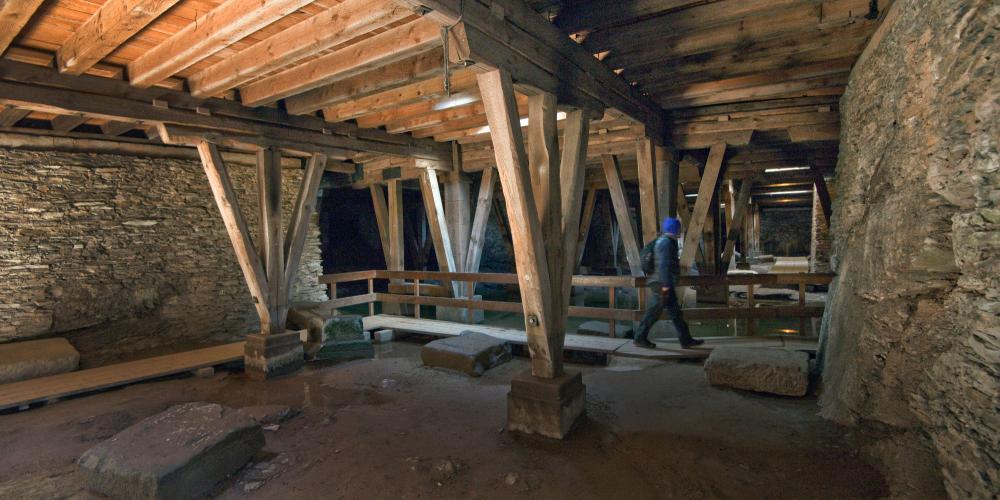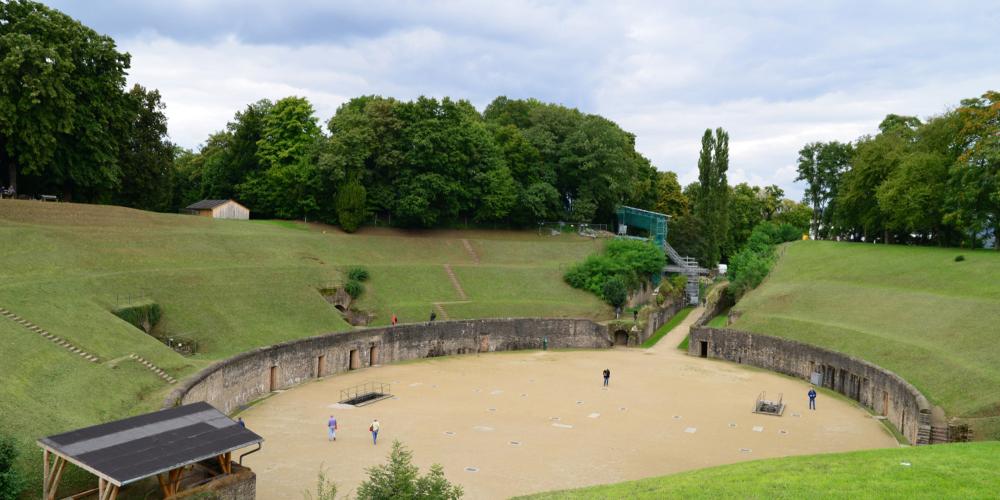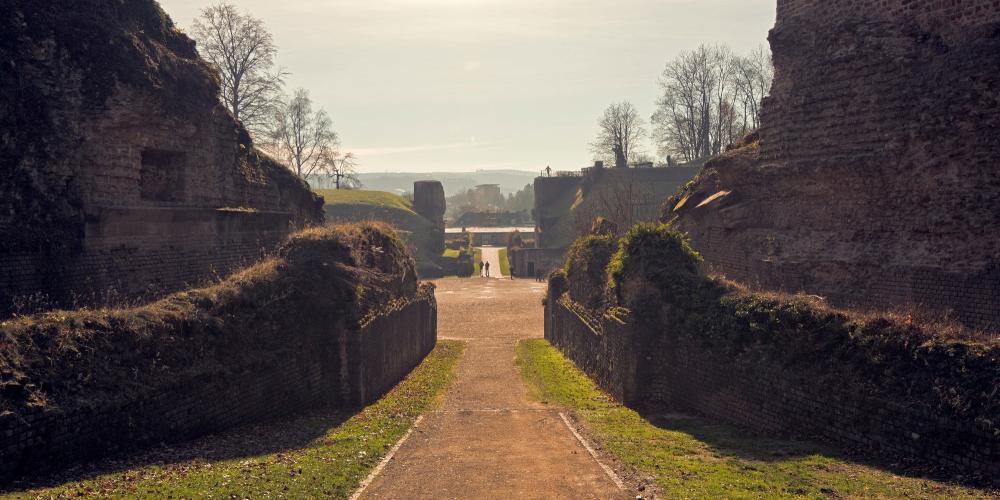Amphitheatre

The Amphitheatre delighted the people of ancient Trier as a place of entertainment, and you can still visit the site today including the arena, the tiered seating and the cellars. Here there was once a stage mechanism: a type of lift that enabled lavish performances to take place in the arena. You can also see the cages and the areas in which people and animals used to wait for their fights at the edge of the ring fence.
The Amphitheatre was built towards the end of the 2nd century, and was a place of mass entertainment similar to today's event arenas. When the building was constructed, it was probably integrated into the city wall as a gate. The tiered seating was approximately 22 metres high, and held up to 22,000 spectators. The mostly bloodthirsty entertainment programme showed fights between people or animals. But the arena, surrounded by a protective parapet wall four metres high, did not just serve as a setting for “bread and circuses”. It was also used for gatherings and religious festivals.
When the Roman Empire came to an end, the Amphitheatre was no longer used. At the beginning of the 13th century, it was used by monks as a place to store materials and plundered for building stone, and later the tiers of the Amphitheatre were planted and used for wine growing. The first excavations of the arena building began in the 19th century, and the arena cellar was uncovered around 1908.
Amphitheatre
**April - September: **
daily 9:00 - 18:00
**October and March: **
daily 9:00 - 17:00
**November - February: **
daily 9:00 - 16:00
Note: Last admission 30 minutes before closing.
Single admission (price per person):
a) Adults: € 4.00
b) Adults in groups (10 or more persons): € 3.50
c) Children and adolescents through age 17: € 2.50
d) Children and adolescents through age 17 in groups: € 2.00
e) Pensioners, unemployed, students (over age 18), severely disabled, military and civilian service: € 3.00
Single admission (family ticket)
f) Families (1 adult with a maximum of 4 children over age 6): € 4.00
each additional child: € .50
g) Families (2 adults with a maximum of 4 children over age 6): € 8.00
each additional child: € .50
ANTIQUITIES CARD for entry to multiple monuments
ANTIKENCARD BASIC € 12,00
Admission into two Roman monuments and the Landesmuseum for a group of at least 15 persons. Valid one week from the time of purchase, no additional reductions.
ANTIKENCARD PREMIUM € 18,00
Entrance to the four Roman monuments and the Landesmuseum is included in the offer for school classes. Valid one week from the time of purchase, no additional reductions.
ANTIKENCARD GROUP €10,00
ANTIKENCARD SCHOOL € 6,00



